TAGGED AS: interviews, movies
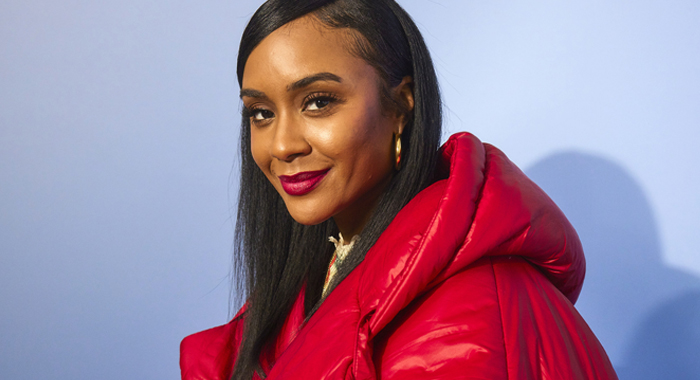
(Photo by Corey Nickols/Getty Images)
In her feature debut A Thousand and One, writer-director A.V. Rockwell turns her lens on Inez (Teyana Taylor), a young woman recently released from prison who is determined to reconnect with her 6-year-old son Terry (Aaron Kingsley Adetola). A product of the foster care system, Inez desperately wants more for her child, but in a city that moves at a dizzying pace, she has no one to rely on but herself. In a moment of recklessness, she kidnaps Terry from his group home, leaving the streets of Brooklyn for Harlem just as a newly elected Rudy Giuliani steps into the city’s highest office. As much as A Thousand and One is about a mother and a son, it’s also about a version of New York City that no longer exists and the citizens who got lost in the shuffle.
The film debuted at Sundance in January to rave reviews, going on to win the grand jury prize at the festival and earn a Certified Fresh 98% Tomatometer score from critics. Ahead of its release in theaters on March 31, we spoke with Rockwell about how she recreated 1990s New York City and why she chose to tackle subjects like gentrification, colorism, and the foster care system.
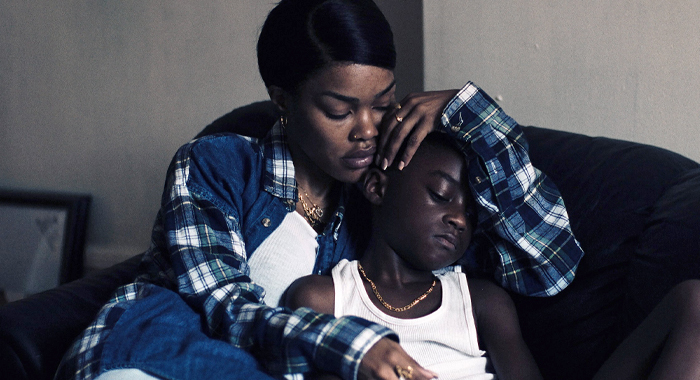
(Photo by ©Focus Features)
“I started thinking about A Thousand and One in 2018. In terms of my wanting to tell a New York story, a coming-of-age New York story, and my farewell to what New York was and the era I grew up in, I’m sure I was gestating for a while. But it was around that time after I finished Feathers that I felt I had the clarity of, ‘Okay, this is how I want to go about acknowledging that time and era.’
I had a clear sense of how I wanted to paint that picture because I had researched what was happening. My DP Eric Yue, my production designer Sharon Lomofsky, and my costume designer Melissa Vargas were instrumental in expanding on that. We were thoughtful about the locations we chose and how we built the palette. Going from a city considered rough and tough and just coming out of a very challenging era in the ’90s, New York was beginning anew. Giuliani came in with a very strong vision of how to make New York City better.”
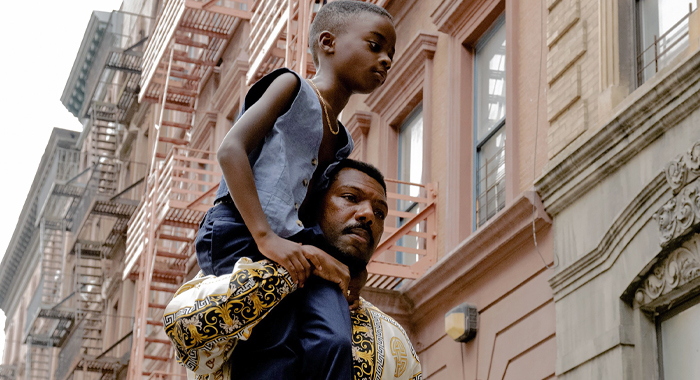
(Photo by Aaron Ricketts/©Focus Features)
“I wanted to establish the New York that I remember. It was a very vibrant city. It was a colorful city with so much nuance to the characters and personalities. The costumes were the last element that made it very specific to that era. We started the movie cementing and entrenching you in what that was, so that by the time we get to 2005, you feel the journey of all of that being stripped away. All that personality and richness of character and soul is being stripped away to create a new personality, one that is a bit more sterile and generic, with a lot more steel and glass.
[The gentrification] started around that time and with a lot of optimism. There was skepticism from some people, but the main headline was that these were all things that were supposed to benefit New Yorkers, but it just wasn’t helping the New Yorkers that happened to be there when it first landed.
I wanted to acknowledge that group, not only because I had seen how growing up in foster care impacted people in my life, but I felt like this group of people could showcase just exactly the degrees to which gentrification can impact the most vulnerable and marginalized groups in society.”

(Photo by ©Focus Features)
“Characters like Terry and Inez, who came out of the foster care system, were dying for a sense of home and dying to reconnect with this idea of family. You see them fight for that throughout the film. So to rebuild their lives in the way they do, to have gentrification come and knock them down again, was such a travesty. I just tapped into where the system was in ’94. It was actually in a very devastating state of disrepair. There’s this New York Times article in particular that struck me. It was an open letter to the new mayor coming in, saying, ‘Hey, please give some attention and resources to the foster care system.’
While this foster care system did evolve, unfortunately, it was not prioritized in the grand vision of what would happen next in New York City. I wanted to use that whole arc to showcase what happens when a city prioritizes commerce over community and its citizens. You see how a Black child can just get lost in the system. I also saw what things would have put him back on the map or back on people’s radars.”
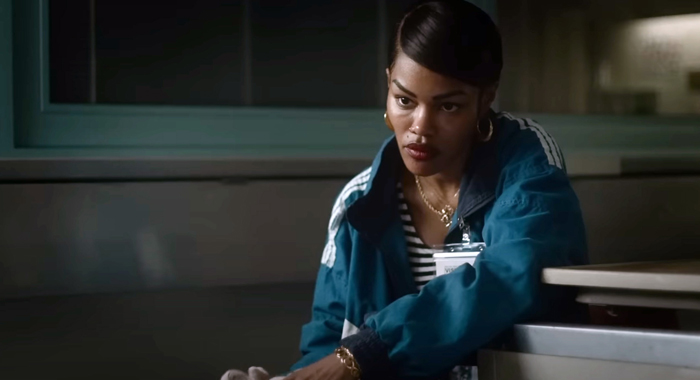
(Photo by ©Focus Features)
Teyana [Taylor] had a combination of all the things that I was looking for. What felt less specific was my trying to find a top-tier actress who could deliver on a demanding performance. I needed a truthfulness in feeling like this woman represents a New York City woman. Still, she also represents an underprivileged woman who comes through in a way that feels honest, pure, and empathetic instead of performative. Teyana had all of that, but also on top of that, she was also a mother. You could feel her vulnerability and her love for each of the versions of Terry you see in the film.
It would’ve been nicer or more convenient for me to do two [versions of Terry], but it just wouldn’t have worked creatively because the story was inspired so much by my coming-of-age experience in New York. I couldn’t contain it in one year or one time period. I had to end it at a specific time for the character (Terry at 17, played by Josiah Cross), but also for those benchmark moments of when Giuliani was in office and where he was at the ending (Terry at 13, played by Aven Courtney). And these two characters would’ve been impacted when [Mayor Michael] Bloomberg came in, where he was at the end of his first era, and how the city was.”

(Photo by ©Focus Features)
“Using this story as an opportunity to tell my truth and coming of age as a young Black woman in New York, it would’ve been a disservice not to acknowledge that part of it. For Inez’s character to feel her journey, you must understand colorism.
In this movie, you see somebody with so much love to give and who gives it to everybody else, yet she’s never quite enough for them. Colorism in the way that impacts her is a huge part of that. It’s just like she’s just never fully enough. Colorism is also a test for Terry in his conversations with Simone (Alicia Pilgrim). It reminds you he’s being asked, ‘How will you show up for the women in your life like her and Inez?’ So he’s coming of age and deciding who he is. Not only what kind of man he will be in general, but what kind of man he will be, specific to them.”
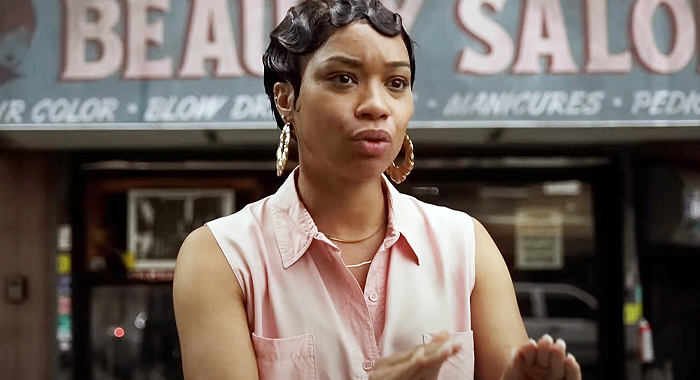
(Photo by ©Focus Features)
“In the film, Inez tells Terry, ‘The only people who care about Black women are other Black women, and even that s–t gets messy.’ That was another truth, because while our sisterhood is there and that sisterhood is powerful and important, we still have our own things to work through. If there is anybody that shows up for Inez in direct and indirect ways, it is the women. But you see the murkiness in that, too, even if they fully show up for her. I was thinking about that.
We have some things to work out between us if we want to be better to each other. I believe, in particular, the classism and respectability politics and the way that can come in between how educated and privileged Black women treat women that look like Inez, who have a bit more of a chip on their shoulder or talk a certain way or move through the world a certain way. The microcosm of how we treat each other is how the world treats us, so if we are trying to empower ourselves as a community, it starts there.”
A Thousand and One opens in theaters on March 31, 2023.